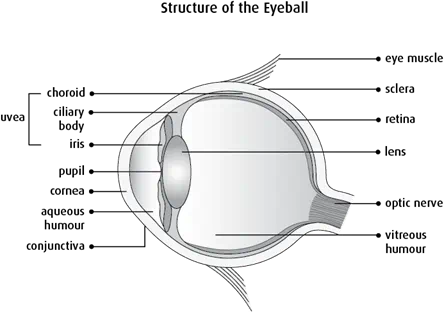What is retinoblastoma?
Retinoblastoma starts in the cells of the retina in the eye. A cancerous (malignant) tumour is a group of cancer cells that can grow into and destroy nearby tissue. It can also spread (metastasize) to other parts of the body.
The retina is part of the eye, which is the organ that lets you see. The retina is the inner layer of cells in the back part of the eyeball. It is made up of special nerve cells that are sensitive to light.

Retinoblastoma is the most common type of eye cancer in children. It is usually found in children under the age of 2. When the eyes are developing, they have progenitor (immature) cells called retinoblasts. These cells divide into new cells and fill the part of the eye that will become the retina. Retinoblastoma is caused by changes (mutations) in the retinoblastoma 1 (RB1) gene in the retinoblasts. Those mutations cause retinoblasts to grow out of control and form a tumour called retinoblastoma. There are 2 copies of the RB1 gene in every cell. There must be a change in both copies of the RB1 gene in a retinoblast cell for a retinoblastoma tumour to develop.
There are 2 different types of retinoblastoma. The type depends on where and when the RB1 mutation occurs and whether the mutation is inherited.
Non-hereditary retinoblastoma (also called sporadic retinoblastoma) happens by chance. About 60% of children with retinoblastoma have non-hereditary retinoblastoma. Children are born with 2 normal copies of the RB1 gene. A mutation of both copies of the RB1 gene in a retinoblast causes a retinoblastoma tumour to form in the eye. Children with non-hereditary retinoblastoma only develop a tumour in one eye (called unilateral retinoblastoma). They will not usually pass the RB1 mutation on to their future children.
Hereditary retinoblastoma is passed on from a parent to a child. About 40% of children with retinoblastoma have hereditary retinoblastoma. Hereditary retinoblastoma can be familial or sporadic. In familial hereditary retinoblastoma (also called familial retinoblastoma), a parent or other family member of the child has had retinoblastoma. In sporadic hereditary retinoblastoma, no one else in the family has a history of retinoblastoma. The RB1 gene mutation happens in the egg or sperm before a baby is conceived (called a germline mutation) and is passed on to the child.
In all cases of hereditary retinoblastoma, a child is born with one copy of the RB1 mutation in all cells of the body. A mutation of the second copy of the RB1 gene then occurs in retinoblast cells and causes retinoblastoma to form. Children with hereditary retinoblastoma can have more than one tumour, and tumours can occur in one eye or both eyes (called bilateral retinoblastoma). Children with hereditary retinoblastoma can pass the RB1 mutation on to their future children. They also have a greater risk of developing other cancers.
